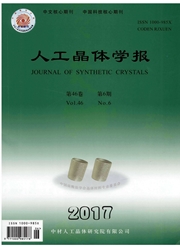

 中文摘要:
中文摘要:
边界元法被用于计算各向异性二维声子晶体的能带结构,该体系由各向异性或各向同性夹杂嵌入各向同性或各向异性基体中而形成。在一个单胞内分别对基体和散射体建立边界积分方程,在基体边界上施加Bloch条件,然后代人界面条件得到一个线性的特征值方程。通过对不同体系声子晶体能带结构的计算,并和其它方法的计算结果进行比较,说明边界元法可以有效准确地计算各向异性声子晶体的能带结构;而且,与各向同性体系相比,正交材料旋转角的变化对面外模态的能带结构有一定影响。
 英文摘要:
英文摘要:
A boundary element method is employed to calculate the band structures of anisotropic phononic crystals, which may be composed of anisotropic or isotropic inclusions embedded in the isotropic or anisotropic matrix. In a periodic unit cell, the boundary integral equations of the matrix and the inclusion are given. Substituting the periodic boundary conditions and the interface conditions, a set of linear equations is formed. Some numerical examples with different systems are illustrated and their results are compared with those obtained by the other methods. It shows that the boundary element method can accurately and efficiently compute the band structures of the anisotropic phononic crystals. Additionally, compared with the isotropic systems, the angle between the symmetry axis of orthotropic materials (different rotating angles) has some influence on the band structures.
 同期刊论文项目
同期刊论文项目
 同项目期刊论文
同项目期刊论文
 Bandgap calculations of two-dimensional solid–fluid phononic crystals with the boundary element meth
Bandgap calculations of two-dimensional solid–fluid phononic crystals with the boundary element meth Bandgap calculationofin-planewavesinnanoscalephononiccrystals taking accountofsurface/interfaceeffec
Bandgap calculationofin-planewavesinnanoscalephononiccrystals taking accountofsurface/interfaceeffec 期刊信息
期刊信息
